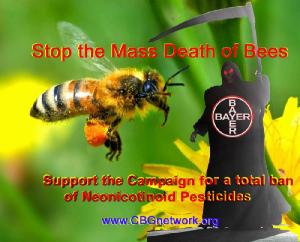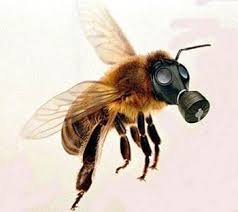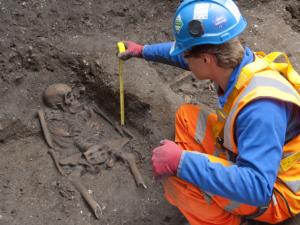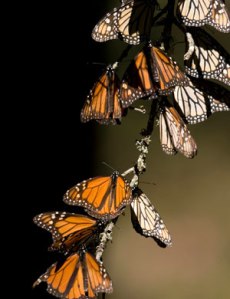Bee devastation: Campaign for total ban of neonicotinoid pesticides
 Bayer managers have known the risks which neonicotinoid pesticides create for the environment since the early 1990s. The company downplayed the risks, submitted deficient studies to authorities and viewed the massive decline of honey bees and pollinators in many parts of the world as ‘collateral damage’.
Bayer managers have known the risks which neonicotinoid pesticides create for the environment since the early 1990s. The company downplayed the risks, submitted deficient studies to authorities and viewed the massive decline of honey bees and pollinators in many parts of the world as ‘collateral damage’.
Introduction
Bayer CropScience, a subsidiary of the German company Bayer AG, and Syngenta are the world leaders in agrochemicals. Bayer´s pesticide sales amounted to 5.5 billion Euros in 2010. Since 1991 Bayer has produced the insecticide Imidacloprid, which belongs to the neonicotinoids, chemically related to nicotine. Imidacloprid is one of the most used insecticides in the world for field and horticultural crops. It is often used as seed-dressing, especially for maize, sunflower, and canola. Imidacloprid is sold under the trade names ‘Gaucho’, ‘Confidor’, ‘Chinook’, ‘Antarc’ and ‘Imprimo’. Bayer exports over 1.000 tonnes of Imidacloprid annually to more than 120 countries. Last year´s sales were 597 million . Imidacloprid is Bayer´s best-selling pesticide. Since patent protection for Imidacloprid expired in most countries, Bayer brought a similar neonicotinoid to the market in 2003. Sales of Clothianidin (product names: ‘Elado’, ‘Poncho’) amounted to 192 million last year. The substance is mainly used for seed coating of maize and canola. Neonicotinoids are systemic chemicals that spread from the seed throughout the plant and disrupt the nervous system of any insect which comes into contact. The neurotoxins travel into the pollen and the nectar and can poison beneficial insects such as bees. Estimations for the LD 50 lie between 3 and 50 ng/bee. That means that 50% of the bees which consume 3-50 ng of the pesticide, all die. At even lower, sublethal, doses these compounds can cause bees to become disoriented, without directly killing the insect. Bees which cannot return to their hive will soon die.
Bee deaths in many parts of the world
Bees are important pollinators which play a vital role in many diverse ecosystems. Food security is highly dependent on the activity of bees and other pollinating insects. The advent of neonicotinoids coincided with the occurrence of large bee-kills, first in France, later on also in Italy, Spain, Switzerland, Germany, Austria, Poland, England, Slovenia, Greece, Belgium, Canada, India, the USA and Brazil. Up to 70 per cent of all hives were affected. In France alone around 90 billion bees (1.8 million colonies) died within ten years. Honey production fell by up to 60%. Also the yields of apples, pears and rapeseed oil decreased. Populations of wild insects also fell dramatically. The threat to bees posed by Imidacloprid and Clothianidin are indisputable. According to the US Environmental Protection Agency Imidacloprid and Clothianidin are “highly toxic” to honeybees. In the data sheet for Imidacloprid published by the German Office for Consumer Protection and Food Safety (BVL) it says: “The substance is classified as dangerous for bees. It may not be applied on flowering plants; this applies also to weeds”. Because of their high persistence neonicotinoids can remain in the ground for several years. For Clothianidin, a half-life of up to five years was observed. Therefore even untreated plants, planted in fields where Imidacloprid or Clothianidin was used in previous years, can absorb the substance via the roots and can contain a dosage dangerous for bees. Imidacloprid is also highly toxic to certain birds, bats, fish, amphibians and shrimps. Imidacloprid use has been linked to eggshell-thinning in birds, reduced egg production and reduced hatching success. The substance is acutely toxic to earthworms, one of the most important creatures in soils, and can leach through soil to contaminate ground water.
Imidacloprid banned in France
In France, Imidacloprid was banned as a seed dressing for sunflowers in 1999, after a third of French honeybees died following its widespread use. Five years later it was also banned as a treatment for sweetcorn in France. In 2003 the Comité Scientifique et Technique, convened by the French government, declared that the treatment of seeds with Imidacloprid leads to significant risks for bees. The 108-page report that was made, by order of the French agricultural ministry, at the universities of Caen and Metz and by the Institut Pasteur states: “The results of the examination on the risks of the seeds-treatment Gaucho (Imidacloprid) are alarming. The treatment of seeds by Gaucho is a significant risk to bees in several stages of life. (…) Concerning the treatment of maize-seeds by Gaucho, the results are as alarming as with sunflowers. The consumption of contaminated pollen can lead to an increased mortality of nurse-bees, which can explain the persisting bee-deaths even after the ban of the treatment on sunflowers”. The studies also showed that even very small dosages, a few parts per billion, could impair honeybees´ learning performance. Residues of Imidacloprid in sunflower nectar and pollen were found at potentially hazardous levels that “can affect honeybees´ learning abilities” and impair their memory. When individual bees were exposed to sublethal doses their foraging activity decreased and they became disorientated, which researchers concluded “can temporarily damage the entire colony”. In 2002 a broad survey for pesticide residues in pollen was conducted across France. Imidacloprid was the most frequently found insecticide and was found in 49% of the samples.
Approval of Clothianidin
Clothianidin is the successor to Imidacloprid and was launched on the American market in 2003 and in Germany in 2006. However, French authorities rejected Bayer´s application for Clothianidin due to uncertainty over its hazards for beneficial insects. The EPA fact sheet states: “Clothianidin is highly toxic to honey bees on an acute basis (LD50>0.0439 µg/bee). It has the potential for toxic chronic exposure to honey bees, as well as other non-target pollinators through the translocation of Clothianidin resides in nectar and pollen. In honey bees, the affects of this toxic chronic exposure may include lethal and/or sub-lethal effects in the larvae and reproductive effects on the queen”. The Canadian Pest Management Regulatory Agency PMRA states that “Clothianidin was determined to be highly toxic to the honey bee, Apis mellifera, on an acute oral basis with a LD50 of 0.00368 µg/bee” which is 1/10 of the quantity the US EPA cites. German beekeepers had warned of Clothianidin’s risks already in 2006. In a letter to German authorities Manfred Hederer, chairman of the German beekeepers federation DBIB, criticized that Bayer’s claim of Clothianidin´s harmlessness was based on one-sided studies. This is confirmed by the Canadian PMRA which judged on Bayer´s application: “All of the field/semi-field studies, however, were found to be deficient in design and conduct of the studies and were, therefore, considered as supplemental information only. Clothianidin may pose a risk to honey bees and other pollinators, if exposure occurs via pollen and nectar of crop plants grown from treated seeds”. PRMA added: “It should also be noted that Clothianidin is very persistent in soil, with high carry-over of residues to the next growing season. Clothianidin is also mobile in soil.”
Ban in Germany and Italy
In May 2008 in southern Germany beekeepers reported that two thirds of their bees suddenly died; some beekeepers lost all their hives. Wild living insects decreased likewise. The economic loss for the affected beekeepers averaged about 17.000 . Tests on dead bees showed that 99% were contaminated with Clothianidin. The substance had been applied to the seeds of sweetcorn planted along the Rhine. The Julius Kuehn Institut, a federal research institute dealing with agricultural issues, stated that “Clothianidin is clearly responsible for the death of the bees”. According to the Institute the damage cannot be explained by the occurrence of bee diseases. The German Office for Consumer Protection and Food Safety (BVL) immediately ordered the suspension of the approval for eight seed treatment products: Antarc (ingredient: Imidacloprid; produced by Bayer), Chinook (Imidacloprid; Bayer), Cruiser (thiamethoxam; Syngenta), Elado (Clothianidin; Bayer), Faibel (Imidacloprid; Bayer), Mesurol (methiocarb; Bayer) and Poncho (Clothianidin; Bayer). The ban on maize, the main application,remains in force. However, the ban for use on oilseed rape was lifted after a few months. The German environmental authority (Umweltbundesamt) complained to the Ministry of Agriculture when Poncho was re-approved on oilseed rape, calling Bayer’s risk assessment “insufficient”. Due to numerous reports of bee decline Italy´s Agriculture Ministry also suspended the use of neonicotinoids on maize in 2008. In 2009, Italy’s neonicotinoid-free corn sowing resulted in far fewer cases of bee mortality in apiaries around the crops. This had not happened since 1999. Slovenian authorities also banned Clothianidin in 2008.
Bee decline in the United States
Between 2006 and 2009 one third of American beekeepers reported massive declines of bee populations. The Environmental Protection Agency (EPA) originally had planned to withhold registration of Clothianidin because of concerns about toxicity in bees, going so far as to suggest that the product should come with a warning label: “This compound is toxic to honey bees. The persistance of residues and the expression clothianidin in nectar and pollen suggest the possibility of chronic toxic risk to honey bee larvae and the eventual stability of the hive.” But in April 2003, the EPA decided to give Bayer conditional registration. Bayer could sell the product and seed processors could freely use it, with the proviso that Bayer completed a life cycle study of clothianidin on corn by December 2004. Bayer was granted an extension until May 2005 (and permission to use canola instead of corn in its tests), but didn’t complete the study until August 2007. Despite this the EPA continued to allow the sale of the pesticide. Since then the abundance of American bees, bumblebees, moths, hoverflies and other wild insects has fallen dramatically, according to the national census of the insects. In November 2010 an internal evaluation by the U.S. Environmental Protection Agency (EPA) was leaked to the public. It described the studies submitted by Bayer intended to confirm the harmlessness of Clothianidin as “inadequate”. According to the memorandum, the risk is particularly great for honey bees. Beekeeper Jeff Anderson testified before EPA on the topic: “The Bayer study is fatally flawed. It was an open field study with control and test plots of about 2 acres each. Bees typically forage at least 2 miles out from the hive, so it is likely they didn’t ingest much of the treated crops. And corn, not canola, is the major pollen-producing crop that bees rely on for winter nutrition. It’s as if they designed the study to avoid seeing Clothianidin’s effects on hive health.” As the preliminary marketing authorization valid to date in the United States is based on precisely this study, U.S. environmental and beekeeping associations have demanded that the marketing authorization be withdrawn. In a letter to the EPA the groups state: “Food production, public health and the environment are all seriously threatened, and the collapse of the commercial honeybee-keeping industry would result in economic harm of the highest magnitude for U.S. agriculture.” 1.2 million signatures have been collected to underscore this demand; the signatures were handed over to the Bayer board at Cologne in the 2011 shareholder meeting.
Bird declines
In 2010 Dutch toxicologist Dr. Henk Tennekes published two studies that demonstrated that the long-term risks for bees associated with neonicotinoids are even greater than hitherto thought. Tennekes showed that there is no safe dose: Neonicotinoids bind irreversibly to critical receptors in the central nervous system of insects so the damage is cumulative. This explains why minute quantities of Imidacloprid may induce bee decline in the long run. And bees are not the only victims: Moths, bugs, butterflies, midges and flies have all succumbed too. Dr Tennekes: “Imidacloprid has been shown to seep out of storage or is washed out of the soil into waterways and groundwater. It is quite obvious that ground and surface water contamination with a persistent insecticide that causes irreversible and cumulative damage to aquatic and terrestrial insects must lead to an environmental catastrophe.” As the insects have disappeared, so have the birds. All over Europe, many species of bird have suffered a population crash. House sparrows, common swifts, starlings and farmland or woodland birds such as the spotted flycatcher, snipe, curlew, and redshank all declined. Tennekes continues: “The evidence shows that the bird species suffering massive decline since the 1990s rely on insects for their diet”.
No investigation against Bayer Management
After the massive bee deaths in Germany in 2008 the Bayer management was sued for downplaying the risks of neonicotinoids, submitting deficient studies to authorities and thereby accepting the huge losses of honey bees. However, the state attorney refused to investigate the case. The charge was closed with the justification that the substances were approved, so the sales could not be illegal. Furthermore, German authorities refused to publish the documents that led to the authorisation on neonicotinoids. The company’s right of secrecy was valued above the public’s interest in investigating the causes of the bee deaths.
There are similar developments on the European level: Industry “experts” are undermining an EU review of the regulations of pesticides. Because the EU institutions do not have their own expertise on bees, the EU Commission outsourced advice on new guidelines to the International Committee of Plant-Bee Relationship (ICPBR), which has set up a working group to look at the impacts of pesticides on bees. Representatives from pesticide manufacturers including Bayer CropScience, Syngenta and BASF all sit on this group and it is responsible for designing and recommending the methodologies for the risk assessments of bees’ exposure to pesticides which are then approved by the EU institutions.
UNEP Report
In March 2011 the United Nations Environment Programme UNEP published a report on bee deaths and described the Bayer pesticides Poncho (Clothianidin) and Gaucho (Imidacloprid) as a risk to numerous animals. The study says: “Systemic insecticides such as those used as seed coatings, which migrate from the roots through the entire plant, all the way to the flowers, can potentially cause toxic chronic exposure to non-target pollinators. Various studies revealed the high toxicity of chemicals such as Imidacloprid, Clothianidin, Thiamethoxam and associated ingredients for animals such as cats, fish, rats, rabbits, birds and earthworms. Laboratory studies have shown that such chemicals can cause losses of sense of direction, impair memory and brain metabolism, and cause mortality.”
Conclusion
The fact that Bayer continously disregards all studies and reports that show the danger and harmful effects of neonicotinoids proves deliberate and cynical blindness. Neonicotinoids have been banned in several countries and yet, Bayer continues to market these products globally. The company should have given urgent consideration to these matters that were brought to their attention again and again. Although Bayer has been informed about the causes of bee deaths for many years and protests have increased from year to year, the company refuses to take action for purely profit-related reasons, and attempts time and time again to distract attention from its responsibility.
Threat to French honey crop
 Honey production is dropping severely in France with beekeepers blaming the use of certain pesticides.
Honey production is dropping severely in France with beekeepers blaming the use of certain pesticides.
Last year’s production was just 15,000 tonnes, compared to 33,000 in 1995, and mortality rates of bee colonies have been rising, averaging about 15-30% per year depending on the region.
One experienced beekeeper from the Rhône, Jacques Freney, told Le Monde the mortality rate used to be 6% of his bees until 2,000, rising to 11% in 2006. It was now 29%.
The finger of blame is being pointed at neonicotinoid pesticides, which first arrived on the market in the 1990s. A wide variety of crops – tomatoes, apricots, melons – are treated preventively with these chemicals which then spread to all parts of the plant.
The EU recently put a two-year moratorium on the use of three treatments on certain crops, but the measure is facing legal attacks from chemical firms and other pesticides remain in common use.
Some even reportedly carry wording claiming they are safe for bees, so are used even when plants are in flower.
However, new research indicates that bees may be more sensitive to the substances than previously thought, even in very low doses, especially if there is repeated exposure.
Mr Freney said: “The chemical acts on the central nervous system like a hard drug, causing over-excitation that leads to the insect’s death.”
Last year he had only 22 “productive” hives out of 122, he said. The others were not “full of dying bees” but were “empty”, because the bees had not been well enough to return to the colony.
Bee industry body Unaf has called on the Agriculture Ministry to ban the chemicals completely and review permissions for “bee” labelling. It is backing use of a European “bee friendly” label to distinguish products grown in a way that is safe for bees.
Bad weather has also been blamed but bees are also vulnerable to certain funguses and mites and to Asian hornets, which have also spread in France in recent years.
Le Monde
Writers beg for monarch butterflies’ protection
Dozens of scientists, artists, writers and environmentalists on Friday urged the leaders of Mexico, Canada and the US to devote part of their meeting next week to discussing ways to protect the Monarch butterfly.
A letter to the three leaders signed by more than 150 intellectuals, including Nobel literature laureate Orham Pamuk, US environmentalist Robert Kennedy jnr and Canadian author Margaret Atwood , notes the Monarch population has dropped to the lowest level since record-keeping began in 1993.
Mexican President Enrique Pena Nieto, US President Barack Obama and Canadian Prime Minister Stephen Harper Obama are meeting in Toluca, near Mexico City, on Wednesday to discuss such matters as economic competitiveness, trade and investment, entrepreneurship and security.
The Monarch’s spectacular annual migration to spend the winter in Mexico is little understood.
Experts blame the drop in numbers on several things: Extreme weather trends, a dramatic reduction of the butterflies’ habitat in Mexico from illegal logging, and genetically modified crops in the US displacing milkweed, which the species feeds on.
The letter says Mexico is addressing the logging problem and calls on the US and Canada to deal with the impact of their agricultural policies.
After steep and steady declines in the previous three years, the black-and-orange butterflies now cover only 0.67ha in the pine and fir forests west of Mexico City, according to a report in January by the World Wide Fund for Nature, Mexico’s Environment Department and the Natural Protected Areas Commission. Monarchs covered more than 18ha at their recorded peak in 1996. Because the butterflies clump together by the thousands in trees, they are counted by the area they cover.
AP
SA wattled cranes on the up and up
World Wetland Day on Sunday marks the highest rate of wattled crane breeding in 20 years.
The cranes are dependent on wetlands for their survival and about 85 percent of them are found on private farms.
“South Africa’s wattled crane population is finally stable and showing a slight increase in KwaZulu-Natal,” said Tanya Smith, senior field officer at the Endangered Wildlife Trust’s African Crane Conservation Programme.
She said KZN is home to 90 percent of the population. Last year, a survey showed the highest count of wattled cranes in 20 years.
Each year, the crane aerial survey completes 25 hours of flying and covers about 20 000km2 over five days.
IOL
Could the Black Death strike again?

An archaeologist working to uncover skeletons from what is understood to be a mass grave for victims of the Black Death, discovered when excavations were made to create a Crossrail tunnel shaft under Charterhouse Square in central London.
A strain of plague which has killed up to 100 million people could strike again, scientists warn.
Scientists have linked the Black Death, which killed 50 million Europeans in the 1300s, and The Plague of Justinian, which struck 800 years earlier, suggesting they were caused by “distinct” strains of the same pathogen.
Tiny samples of the plague bacteria were taken from skeletons belonging to two victims of the Justinian plague, which killed up to 50 million people across Asia, North Africa, Arabia and Europe.
Fragments of DNA were found in their 1 500-year-old teeth and used to recreate the bacteria’s whole genetic code.
Dave Wagner, professor in the Centre for Microbial Genetics and Genomics at Northern Arizona University, said: “We know the bacterium Y. pestis has jumped from rodents into humans throughout history and rodent reservoirs of plague still exist today in many parts of the world.
“If the Justinian plague could erupt in the human population, cause a massive pandemic, and then die out, it suggests it could happen again.”
Ancient DNA expert Professor Hendrik Poinar said the study – published in The Lancet Infectious Diseases – “is both fascinating and perplexing”.
Daily Mail


